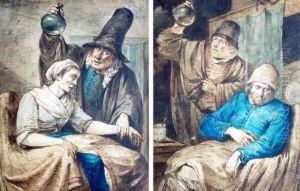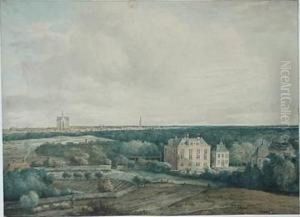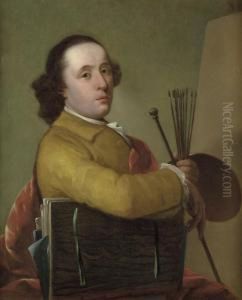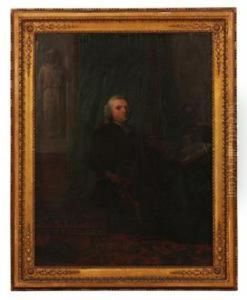Gerard Van Nijmegen Paintings
Gerard van Nijmegen was a Dutch painter, draughtsman, and etcher, known primarily for his landscapes and animal paintings. He was born in 1735 in Rotterdam, the Netherlands, into a family with artistic connections; his father, Theodorus van Nijmegen, was also a painter.
Gerard van Nijmegen showed an early talent for art and initially trained under his father. He would later further his studies by traveling to Germany and France, which was a common practice for artists of the period seeking to refine their skills and gain exposure to different artistic styles and techniques.
Upon his return to the Netherlands, van Nijmegen settled in Rotterdam. He became a member of the local Guild of Saint Luke, an association of artists that played a crucial role in the artistic life of the city. Through the guild, he would have had the opportunity to meet other artists, exchange ideas, and participate in exhibitions.
Van Nijmegen's work was marked by a keen observation of nature and a talent for rendering atmospheric effects, which garnered him a considerable reputation. He specialized in idyllic landscapes often animated with figures and animals, reminiscent of the Dutch Golden Age tradition. His style was influenced by the works of 17th-century Dutch masters, and he was particularly skilled in depicting the interplay of light and shadow.
Over the course of his career, van Nijmegen also produced etchings and drawings, although he is predominantly remembered for his oil paintings. His works were collected by art connoisseurs in the Netherlands and beyond, contributing to his success as an artist during his lifetime.
Gerard van Nijmegen continued to work and live in Rotterdam until his death in 1808. His paintings can be found in various museum collections, including the Rijksmuseum in Amsterdam, and are appreciated for their contribution to the Dutch landscape painting tradition of the 18th century.



